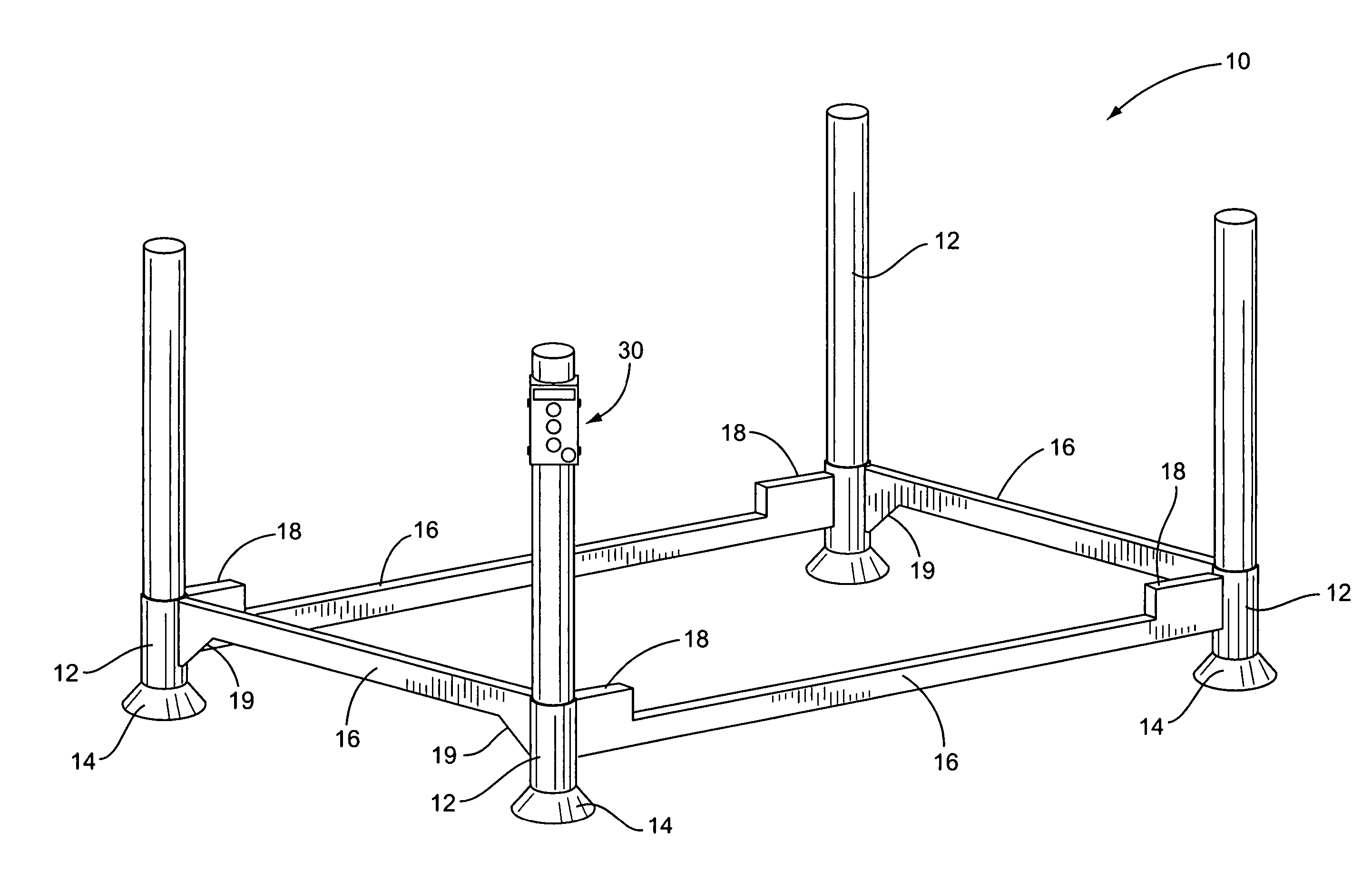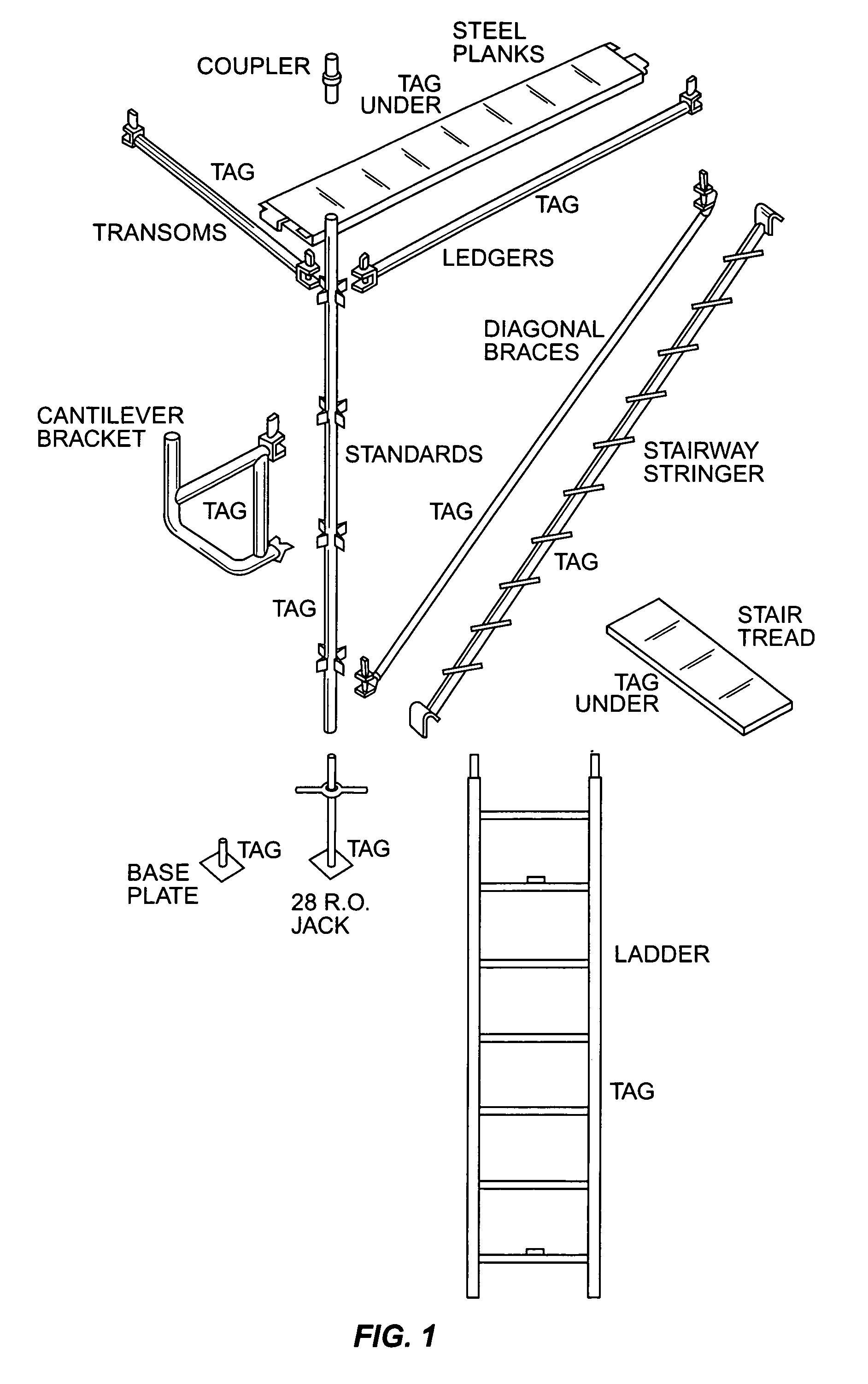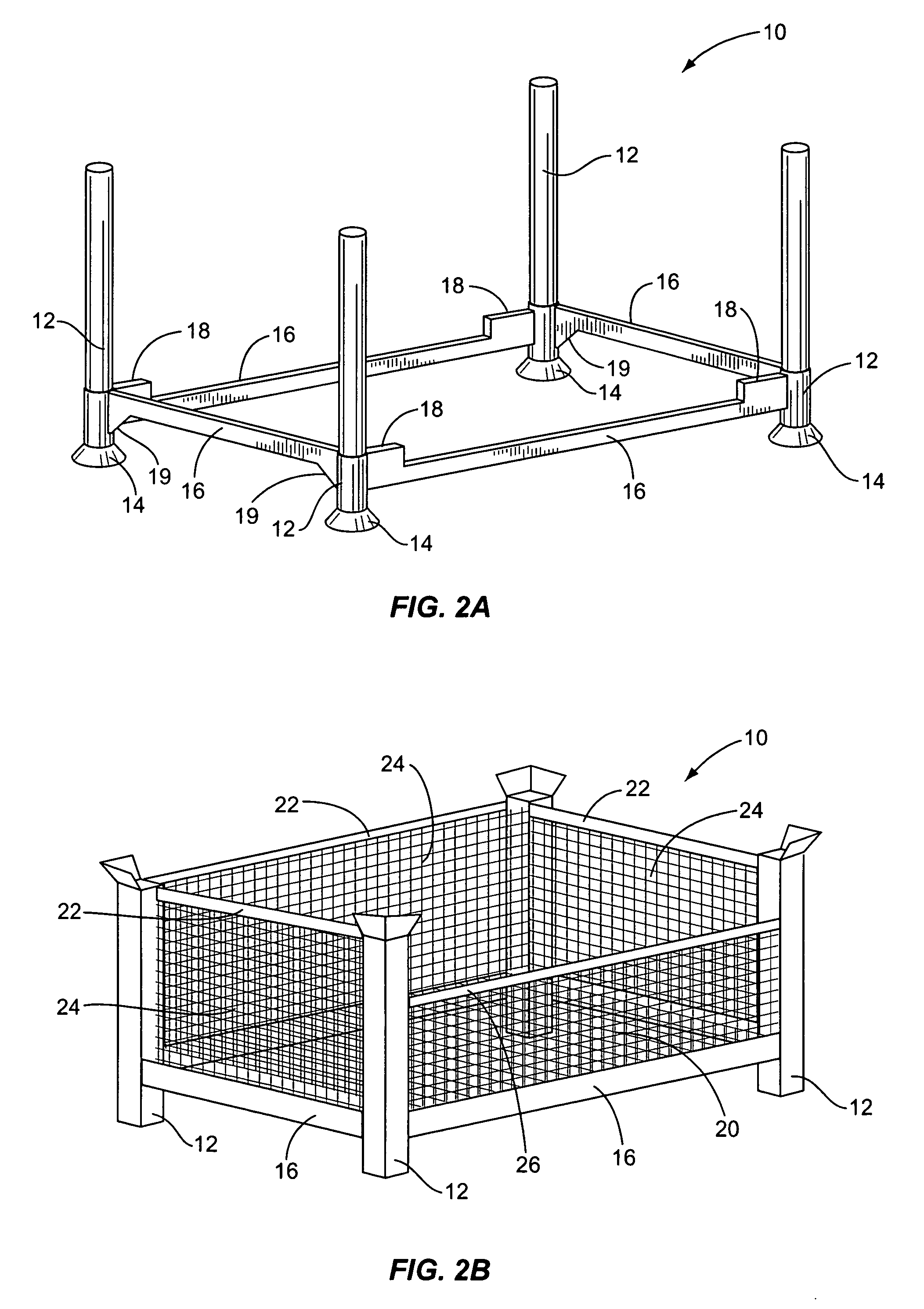Intelligent reader system and method for identifying and tracking goods and materials transported in pallets, including but not limited to scaffolding materials
a pallet and intelligent technology, applied in the field of intelligent reader system and method for identifying and tracking goods and materials transported in pallets, can solve the problems of significant time before detection, goods or merchandise can be lost or stolen in transit, and it is difficult to provide readers at fixed locations, etc., to reduce or eliminate errors caused by manual tracking and/or counting, and reduce discrepancies between suppliers and customers regarding the checkout and return of materials
- Summary
- Abstract
- Description
- Claims
- Application Information
AI Technical Summary
Benefits of technology
Problems solved by technology
Method used
Image
Examples
Embodiment Construction
[0033] The embodiments set forth below represent the necessary information to enable those skilled in the art to practice the invention and illustrate the best mode of practicing the invention. Upon reading the following description in light of the accompanying drawing figures, those skilled in the art will understand the concepts of the invention and will recognize applications of these concepts not particularly addressed herein. It should be understood that these concepts and applications fall within the scope of the disclosure and the accompanying claims.
[0034] In general, the present invention is an identification reader that is attached or included as a part of a pallet or container. The pallet is used to store and / or transport goods. The goods to be stored and / or transported may contain identification devices, such as RFIDs for example, that contain unique identification codes. The pallet reader, by being placed on or as a part of the pallet, is able to automatically detect t...
PUM
 Login to View More
Login to View More Abstract
Description
Claims
Application Information
 Login to View More
Login to View More - R&D
- Intellectual Property
- Life Sciences
- Materials
- Tech Scout
- Unparalleled Data Quality
- Higher Quality Content
- 60% Fewer Hallucinations
Browse by: Latest US Patents, China's latest patents, Technical Efficacy Thesaurus, Application Domain, Technology Topic, Popular Technical Reports.
© 2025 PatSnap. All rights reserved.Legal|Privacy policy|Modern Slavery Act Transparency Statement|Sitemap|About US| Contact US: help@patsnap.com



